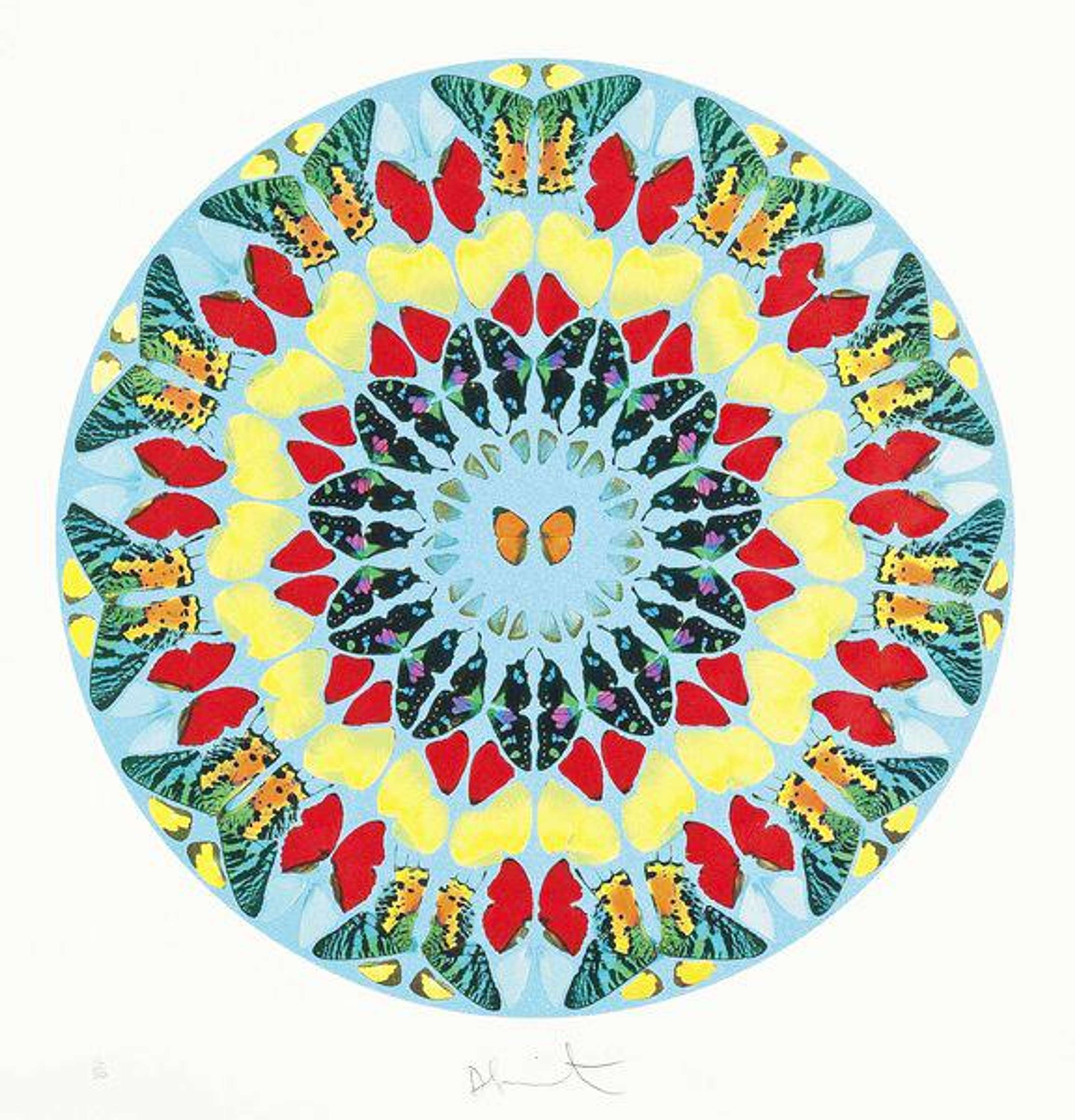
Dixit Insipiens (diamond dust)

Dixit Insipiens (diamond dust)
Signed Print
Damien Hirst
£9,000-£13,500
$18,000-$27,000 Value Indicator
$17,000-$25,000 Value Indicator
¥80,000-¥130,000 Value Indicator
€10,500-€15,000 Value Indicator
$90,000-$140,000 Value Indicator
¥1,870,000-¥2,800,000 Value Indicator
$12,000-$18,000 Value Indicator
There aren't enough data points on this work for a comprehensive result. Please speak to a specialist by making an enquiry.
74 x 71cm, Edition of 50, Screenprint
Auction Results

Track auction value trend
Meaning & Analysis
Dixit Insipiens is a signed screen print in colours by renowned contemporary artist, Damien Hirst. The print shows an impressive arrangement of butterflies. Red, yellow, black and turquoise butterflies are arranged in concentric circles against a pale blue backdrop. The bright and lively colours of the print are captivating and immediately seize the viewer’s attention.
The print was made in 2009 and is part of the artist’s Psalms series which he started in 2008. Composed of 150 works, Hirst uses butterfly wings on painted canvases in each print. The Latin name of the print refers to a psalm from the Old Testament. While the name of the print clearly references Christianity, and the colours allude to stained glass church windows, the prints in the series also seem to reference the abstract patterns of Hindu and Buddhist mandalas.
Hirst is interested in contemporary belief systems, such as religion, and often explores these systems in his artworks. The butterfly, as an insect imbued spiritual symbolism, is an apt icon for exploring such themes. The butterfly as an icon was used by the Greeks to depict Psyche and the soul and is also found in Christian imagery to signify the resurrection. By using this loaded symbol, Hirst is able to incorporate various religious influences into his artworks.